update:August 7, 2025
A special interview for the Toyota Foundation’s 50th year anniversary project
A reporting to Chile
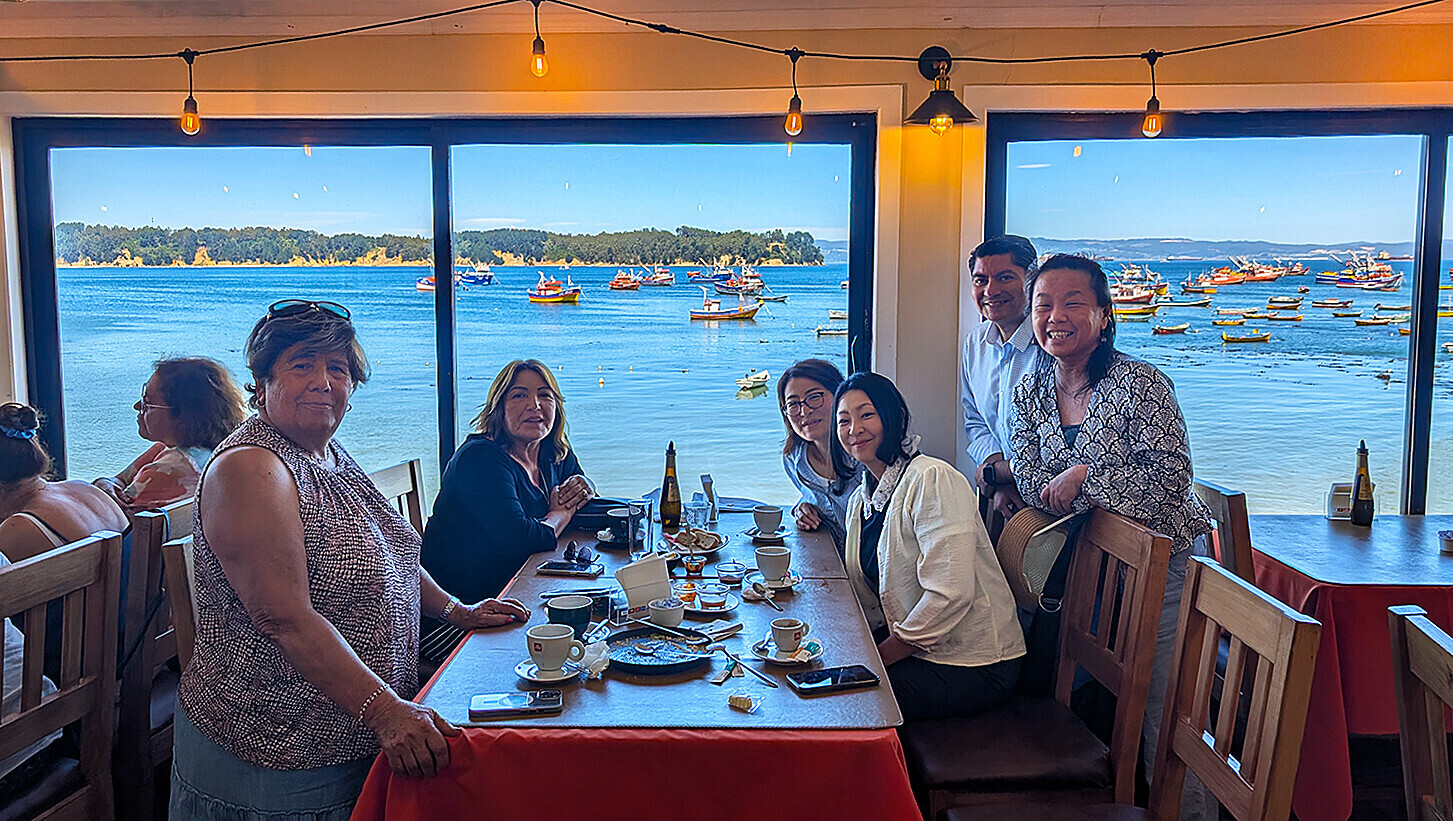
Text written by Michi Kaga
Translated by Naoto Okamura
Para la versión en español, haga clic aquí
Let's go to Chile
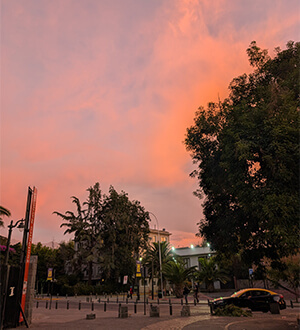
We made a trip to Chile for reporting on one of the past grant-awarded projects in mid-January, 2025. Living in a mountain area of Miyagi Prefecture, northern Japan, I shoveled off piled-up snow for the third time that day before I headed out to Haneda Airport in Tokyo.
With Ms. Yoko Niide, a colleague of the Toyota Foundation, we took several flights and spent about 25 hours to reach our destination. When we finally landed in the Chilean capital of Santiago, my legs had become swollen. To my surprise, the sun was strong and scorching, but the air was dry and felt even cool once I stepped into the shade. Unlike the muggy and hot summer of Japan, the summer in Chile was completely different and felt pleasant.
What surprised me first about Chile was that the sun set rather late at night. A tourist guidebook discourages travelers from going out after dark, but it was still bright even past 20:00 p.m. as if it was 15:00 p.m. and shops and restaurants were busy. Chile is 12 hours behind Japan, and I was suffering jet lag and having difficulty trying to keep track of what time to eat dinner and what time to go to sleep during my stay.
On the following day, we boarded an airplane to fly down to Concepción Province, about 500 kilometers southwest of Santiago. Geographically, Chile stretches long and narrow from north and south, and as such the country has vastly different climates and vegetations from region to region. For me, it was one of the joys I had of looking at a wide variety of plants and flora that I had never seen in Japan.

In the capital city of Santiago, I saw some trees dotted on the dry, reddish mountains and a lot of cactuses. In contrast, Concepción Province is located further away from the equator and the area is lush with greenery due to moist air from the ocean. But because of that, there were days when it felt rather chilly and I needed to put on long-sleeved clothes.
The city of Talcahuano, Concepción Province
The city of Talcahuano, Concepción Province, is the main site of the grant-awarded research project, for which we made the reporting trip this time. Just like Japan, Chile is prone to earthquakes and suffered the Valdivia Earthquake in 1960 , a magnitude of 9.5 earthquake and the biggest ever recorded in history. At the time, tsunami waves travelled about 17,000 kilometers across the Pacific Ocean and reached the shores of Japan, causing a large number of casualties. The research project aims to chronical how bosai or disaster risk reduction (DRR) initiatives, which have been implemented in Japan, are communicated to Chile through international cooperation and how such efforts have been “translated” or localized in such a way as to meet the local-specific needs. Mr. Boris Sáez, the project’s local partner, has been responsible for disaster prevention as the Chief of the Department of Disaster Risk Management in the municipality of Talcahuano. He has been engaged in adjusting Japan’s disaster risk reduction activities to the on-the-ground situation in Chile, seeking to raise the awareness of disaster preparedness among local residents in disaster-prone Talcahuano. Dr. Chika Watanabe, the project representative, is an anthropologist by trade and has been supporting Mr. Sáez’s activities.

After an interview with Dr. Watanabe and Mr. Sáez (click here for the interview article), they took us to a restaurant in the port town of Tumbes, where colorful boats were anchored and berthed in the sea as far as the eye could see. The sight was picturesque just like a painting. A row of restaurants lined the seaside street along the bay, making the town a popular destination for tourists to flock to by car from neighboring regions.
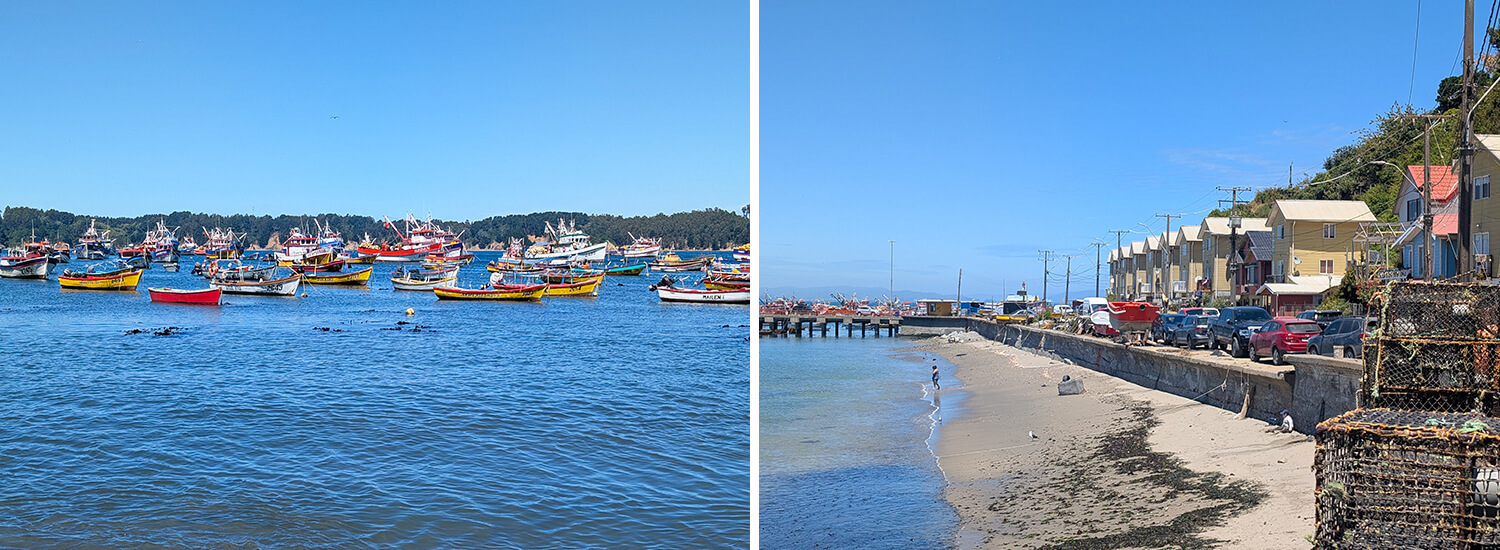
The restaurant we went to is run by Chilean women, Ms. Ana María Badilla and Ms. Silvia Sepúlveda, who are featured in a documentary film “Tsunami Ladies” that portrays exchanges between Chilean and Japanese tsunami survivors in the tsunami-ravaged town of Minamisanriku in Miyagi Prefecture. They waited for us at their restaurant and served us dishes using a lot of local seafood products. They told us that they had spent two years to rebuild their restaurants after the disaster, and we told them that we had paid a visit to Minamisanriku a month earlier. And to our great surprise, we found out that we both knew the same people. I was made to realize how small the world really is. Looking out at the vast ocean, I thought of the great distance between Japan and Chile but at the same time I also felt this very ocean connected the two counties in a sense.

 , we had dishes using fresh seafood products for lunch. These dishes were flavored simply with salt and lemon juice and they suited our palates. In Chile, lunch is seen as the main supper and people enjoy lunch at leisure over wine or other drinks.
, we had dishes using fresh seafood products for lunch. These dishes were flavored simply with salt and lemon juice and they suited our palates. In Chile, lunch is seen as the main supper and people enjoy lunch at leisure over wine or other drinks. 
 . 1:This was a ceviche containing raw fish marinated with lemon juice. It tasted light and refreshing. 2:On the following day, we had lunch at Ms. Silvia’s restaurant. The soup was flavorful with umami from the ingredients. It was served in an oversized pot, large enough to require using both arms, but it was a serving for just one person. It had quite a few clams in it and was a lot in volume.
. 1:This was a ceviche containing raw fish marinated with lemon juice. It tasted light and refreshing. 2:On the following day, we had lunch at Ms. Silvia’s restaurant. The soup was flavorful with umami from the ingredients. It was served in an oversized pot, large enough to require using both arms, but it was a serving for just one person. It had quite a few clams in it and was a lot in volume. What struck me a lot in this port town of Tumbes, Chile, was I saw hardly any signs or traces of the past tsunamis and disasters. Even though this region suffered major earthquakes and tsunami-induced damage in 1960 and 2010, I rarely saw warning signs of tsunami levels, preservation of damaged buildings or seawalls – the kinds of things you often come across in Japan. Unless someone mentioned it, you would never realize this beautiful port town was actually damaged by tsunami. When asked, Mr. Saez said that many of the locals did not want to talk about their disaster experience because they had a strong desire to regain their ordinary life. The same thing can also be said about the seaside area of the Talcahuano administrative district where he works, and I saw hardly any remnants of the disaster that had occurred about 15 years ago. The only things I spotted were a signboard describing the past disaster (see the second photo below) and a signpost pointing to the direction for evaculation in the case of a tsunami (see the first photo below), both of which Mr. Saez had called on the local government to put in place. This experience has left me a strong impression that efforts to rebuild disaster-hit areas vary from country to country and from region to region.
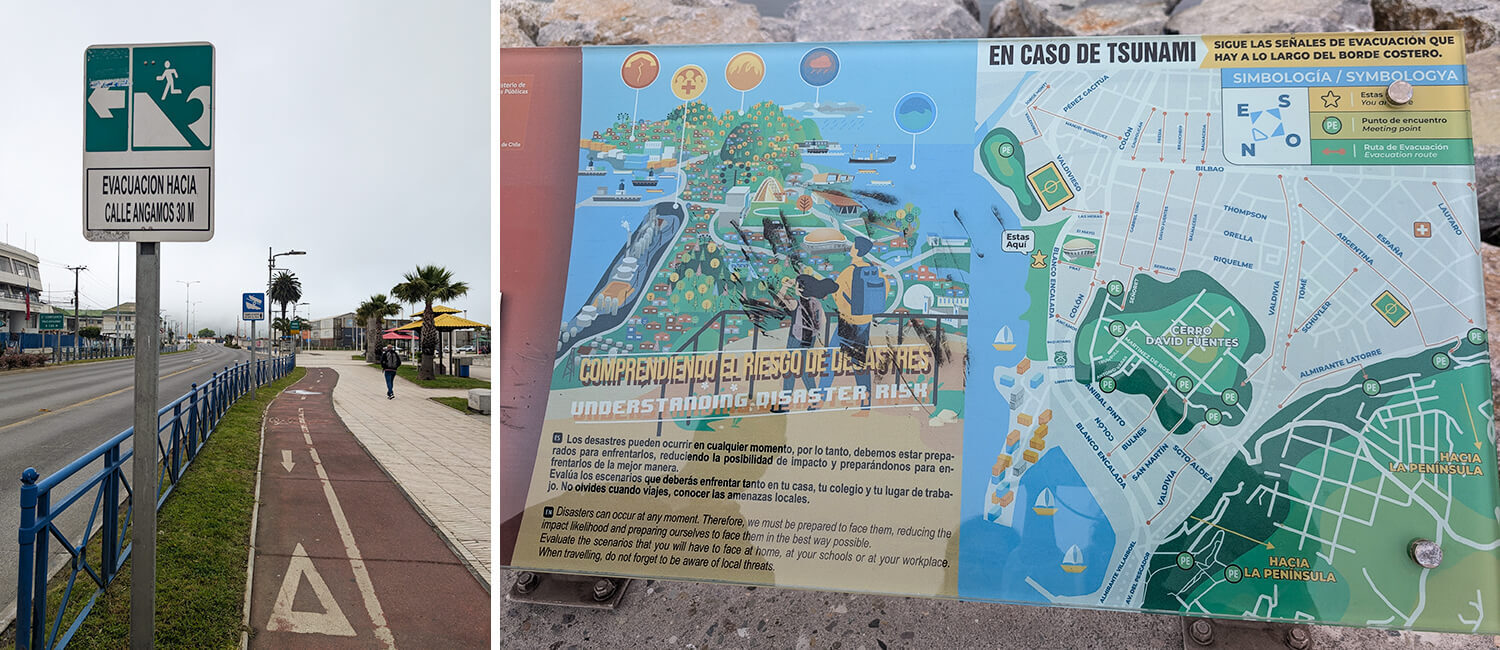
The everyday lives of Chilean people
On the second day of our reporting trip in Talcahuano, we had the opportunity to visit the homes of two elderly people who had experienced Chile’s two major earthquakes, and they were interviewed for the grant-awarded project![]() during its grant period. For us who visited Chile for the first time, it turned out to be a memorable experience to see the everyday lives of Chilean people.
during its grant period. For us who visited Chile for the first time, it turned out to be a memorable experience to see the everyday lives of Chilean people.
Initially, Mr. Sáez and Dr Watanabe’s collaborator on the project, Dr Jenny Moreno, interviewed these senior citizens, with a view toward listening to what they thought was helpful in the wake of the disasters and what could be useful for disaster risk reduction. But they could not extract answers to that effect, and they felt that these interviews were a failure. But as they continued to interview several more disaster survivors, it began to dawn on them that all of their tough life experiences, including those of disaster, were connected and not an isolated incident in their lives. That’s when Mr. Sáez realized it was worth listening to their life experiences in their totality. When I listened to what they had to say, their long lives were indeed eventful and their memory of the disaster turned out to be a mere fraction of their lives.
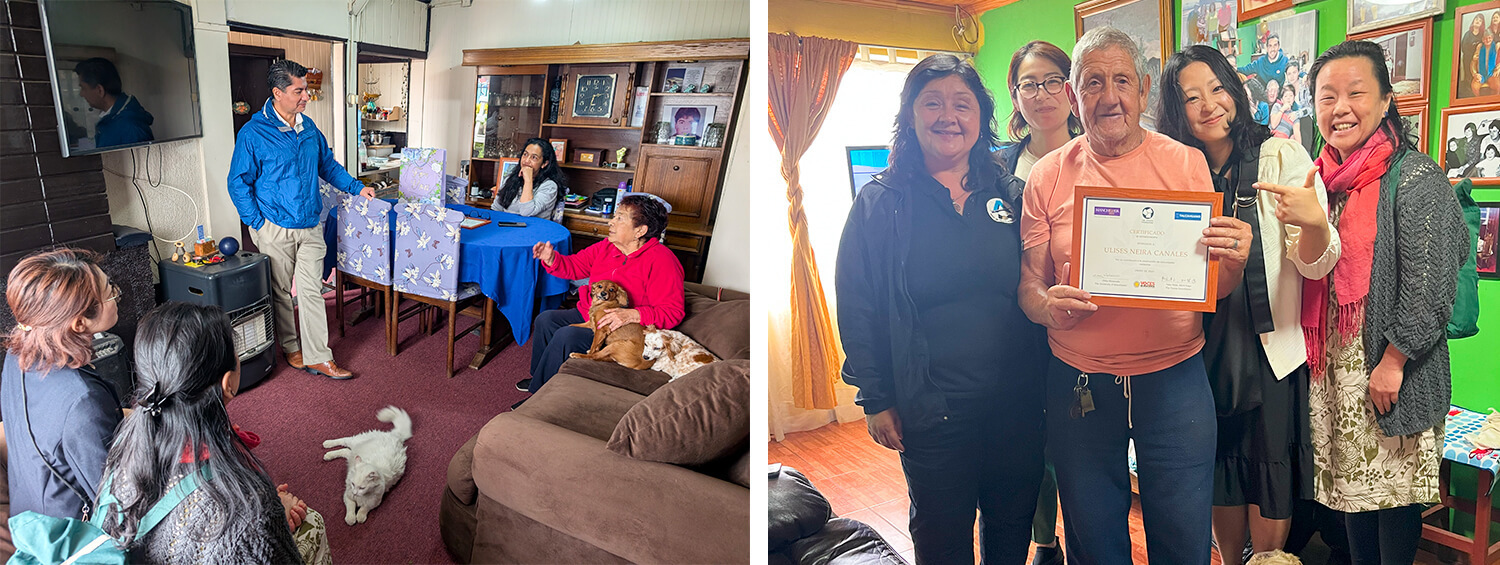
According to Mr. Sáez, many of these elderly interviewees lived alone and said that they were feeling lonely at the time of the interview. But interactions through the interviews and with children in their local community helped these elderly people develop a greater sense of self-esteem and mitigated their loneliness. At the time of our visit, the daughter of each of the two elderly interviewees were in attendance, underscoring their close relationships with their family members. Hearing their life stories, I realized one key factor of disaster risk reduction is building a web of close-knit ties with other people in everyday life.
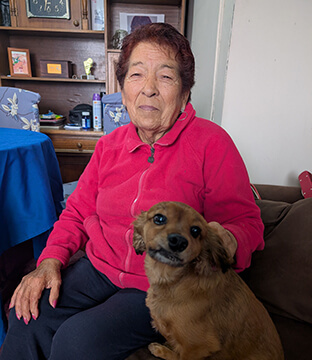
Ms. Rosa, a 74-year-old interviewee who lives on her own, had her youngest daughter visiting her. She gave birth to seven children, and one of her sons died in a car accident at the age of 19. After 20 years of her marriage, she divorced her husband due to his domestic violence, and later became a teacher to provide for her family. Despite many hardships in her life, she stressed that you can make it in life if you do not give up.
The interview conducted for the grant project and interactions with local children, she said, made her feel special and happy as she felt her life was validated by other people.
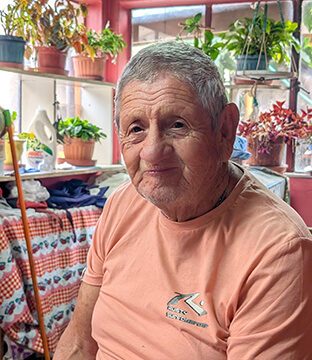
Mr. Ulises Neira Canales, a 84-year-old interviewee who also lives on his own, lost his parents at a young age and lost his wife 20 years ago. After he took part in this project, he said it was quite fun having exchanges with local children and being interviewed about various things by them.
His daughter, who sneaked out of her work at a pharmacy, joined him and said he was her treasure and she felt happy about his having a good experience.

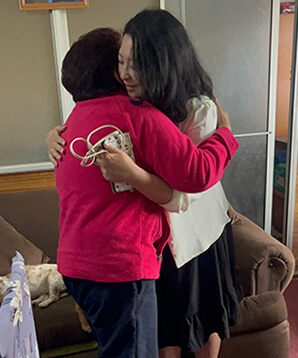
In Chile, people greet each other by hugging lightly and cheek-kissing each other.
We followed this local custom and greeted people this way wherever we went. Chilean people also asked for our names and called us by our first name. It seemed that our names were easy to remember; Yoko is the same as Yoko Ono, the world-renowned widow of the late John Lennon; my name Michi sounds similar to how Chilean people call out to cats in their language.
We touched each other’s bodies, called each other by the first name, and said Ciao loudly when we parted. All that helped us feel closer together and make friends easily during our stay in Chile.
